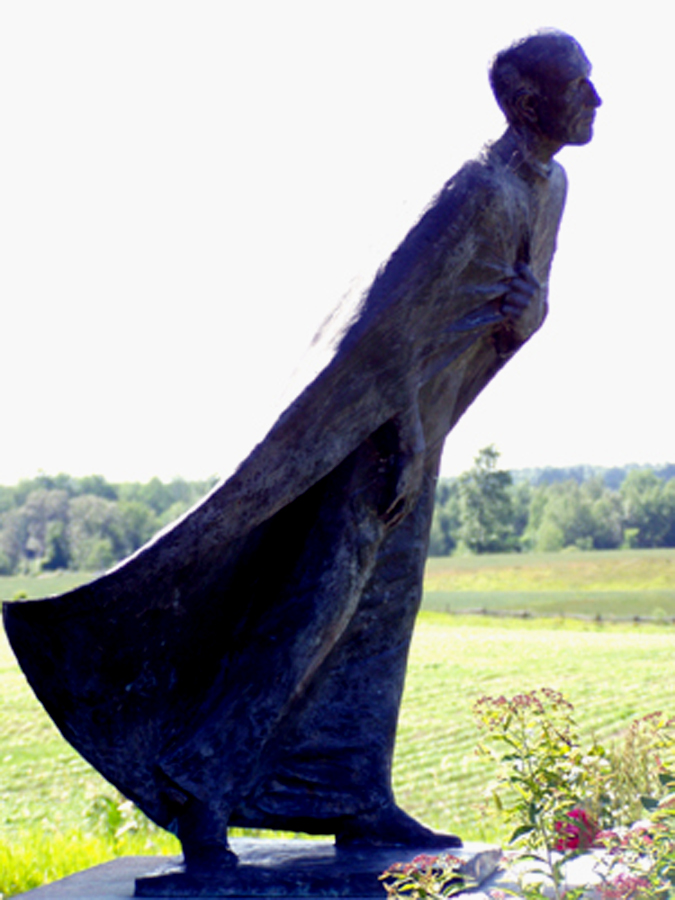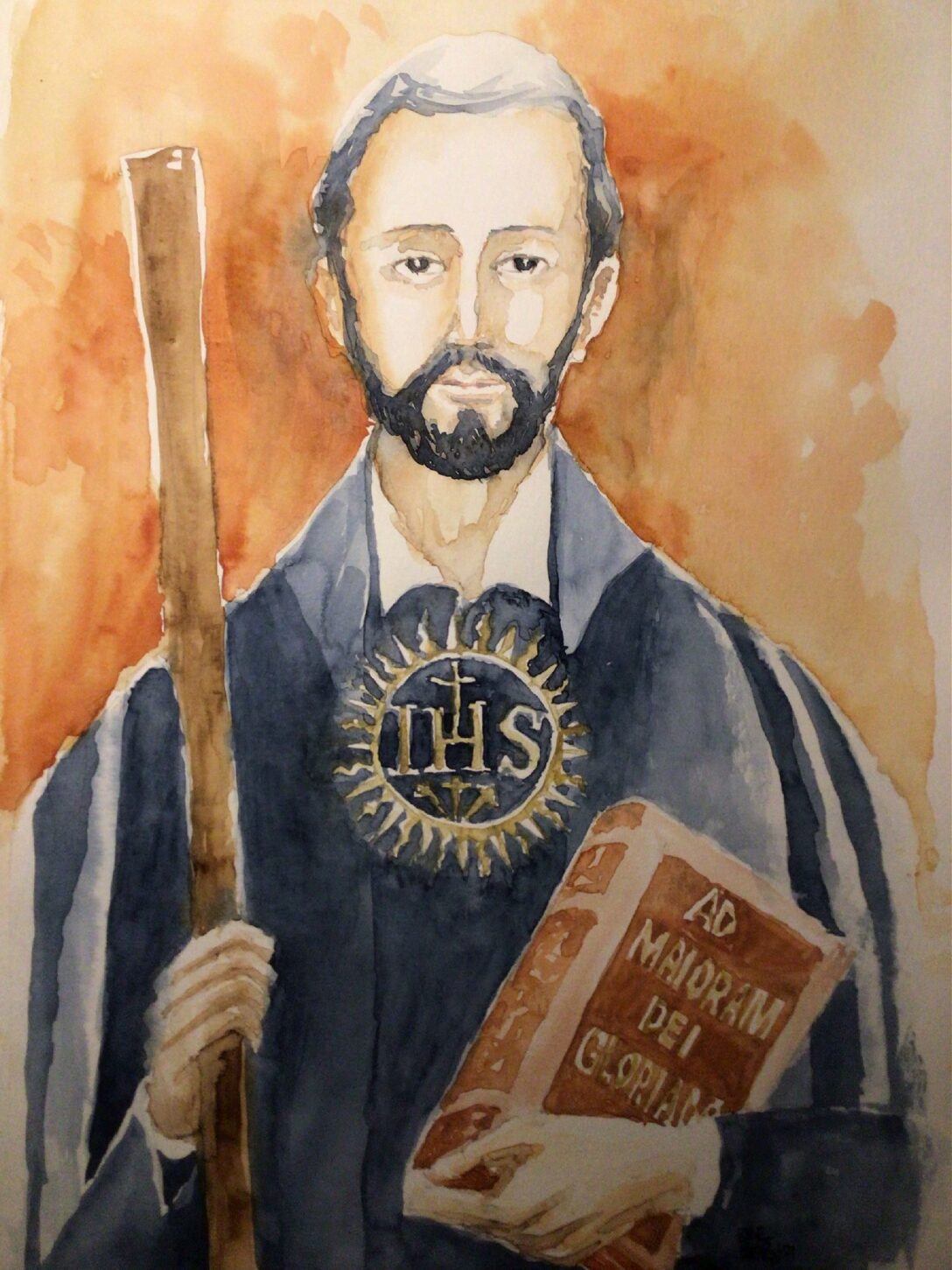Ignatius was born, the youngest of 13 children, at Loyola in the Basque country of northern Spain. His mother died soon after his birth. At the age of 15 he was sent into the service of the Queen’s Treasurer at Avila. Here he learnt the skills and behaviour of a chivalrous knight.
1517: He moved north to be Gentleman-in-Waiting to the Duke of Nájera, Viceroy of Navarra. In this job he finds himself fighting the French in the Battle of Pamplona. Ignatius falls wounded and his taken home to Loyola to recover. There follows a time of conversion and discernment.
At the age of 31 he leaves Loyola and goes on pilgrimage to the Holy Land, stopping first at the shrine of Our Lady at Aránzazu. He then continues to do a night in vigil before the Black Madonna at the monastery of Montserrat, before spending 11 months of anguished prayer at Manresa. He begins to make the notes which will become the Spiritual Exercises.
He travels from Barcelona for the Holy Land, arriving in Rome on Palm Sunday. and five months later enters Jerusalem. The Franciscans won’t let him stay in the Holy Land, so he returns to Barcelona where he decides to learn Latin before pursuing higher studies in order to ‘help souls’.
Ignatius decides to follow theology courses at the university of Alcalá, near Madrid, but is arrested and imprisoned by the Inquisition who don’t like a lay man without formal qualifications preaching about God. He changes city to Salamanca, but again has problems, so he decides to go abroad to the more liberal Paris.
In 1528 Ignatius enters the university of Paris where he meets Pierre Favre and Francis Xavier. Eventually there are six companions who, as they near the end of their studies, decide to make vows of poverty and chastity and go to Jerusalem.
The companions reach Venice en-route to Jerusalem. While waiting they undertake apostolic work. When travel proves impossible, the companions travel to Rome in 1537 and put themselves at the service of the Pope and the Church.
The companions decide to bind themselves in a new religious order to be called the Society of Jesus and in 1549 Pope Paul III approves the new Order.
Ignatius is elected the first Superior General of the Society of Jesus, and the first ten companions take vows of poverty, chastity and obedience. The Society grows quickly and members run many houses for the poor and rejected as well as acting as expert theologians in the Council of Trent.
Ignatius write letters to Jesuits everywhere, he has his Spiritual Exercises printed in 1548, the Constitutions for his Order published in 1550 and his autobiography written in 1555
1556: 31st July – Ignatius dies in Rome.

Name: Inigo Lopez de Loyola
1491: born in Loyola, Spain
1521: Falls wounded in the battle for Pamplona and is converted to God.
1522: Lives a life of confusion and pain in Manresa, learns about the ways of God.
1528: Goes to Parish to learn Theology aimed at becoming a priest.
1534: Joins with six companion to live a life of radical poverty ad service of God.
1540: In Rome the Society of Jesus is approved by the Pope.
1556: Dies in Rome
Canonised: 1622
Quote from Saint
You have given all to me. To you, Lord, I return it.
Ignatius of Loyola, Spiritual Exercises 234
Today’s Scripture
Matthew 13 New Revised Standard Version, Anglicised Catholic Edition
44 ‘The kingdom of heaven is like treasure hidden in a field, which someone found and hid; then in his joy he goes and sells all that he has and buys that field.
45 ‘Again, the kingdom of heaven is like a merchant in search of fine pearls; 46 on finding one pearl of great value, he went and sold all that he had and bought it.
Thought for the Day
One of the most striking images of St Ignatius (above) represents him leaning forward with one foot raised. It originates from a letter in which Ignatius says that a Jesuit is one who is to live ‘always with one foot raised,’ in readiness for service and mission. In the autobiography, which he reluctantly dictated near the end of his life, Ignatius describes himself throughout as “the pilgrim”. We know that when he left Loyola after his convalescence he intended to go to the Holy Land and to live there as a pilgrim. That was not to be, and yet what a pilgrimage Ignatius made! It was to be a journey from a life of privilege to poverty, from youthful ambition to humility. Ultimately, it was a journey of freedom, a movement from compulsion to companionship, a growth in grateful acceptance. It showed an openness to God which allowed the emergence of a shared mission which would extend across the world and span the centuries.
At the beginning of this Lent:
What are you leaning towards?
How is your foot raised?
